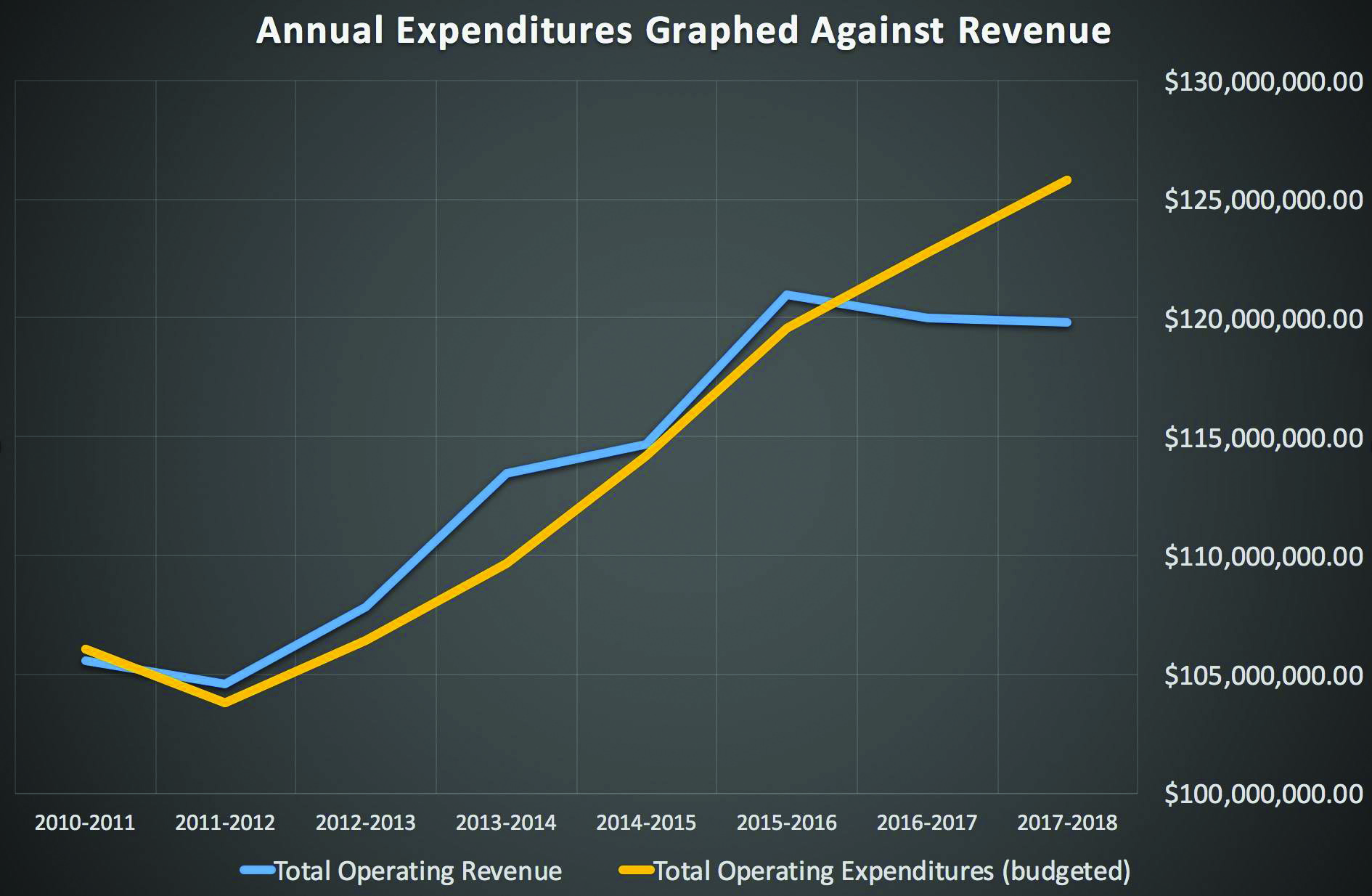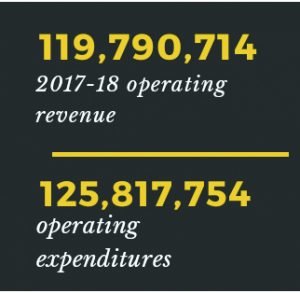Due to a widening budget gap, St. Lawrence University plans on reducing expenditures and raising revenue by $12 million over the next three years. “You can’t sustain a situation where your expenses are growing faster than your revenue, and that’s where we are now,” explained St. Lawrence’s Acting Chief Financial Officer, Janice Albano. “And we decided that now is the time to start to address that.”
The University is still in the planning stages on how to address the growing budget problems. The creation of next year’s budget begins with the Senior Staff’s first draft, which is based on the prior year’s results, and “involves discussion with campus tri-partite committees, consultation with the trustee Budget and Finance Committee, and then goes back to the Senior Staff to finish a proposed budget for the Board of Trustees to consider in May or June,” explained Albano.
While the plan is to generate $4 million per year, it is not clear if the emphasis will be more on making cuts or raising revenue. “We’ve just really started to develop the ideas about what we might do. We’re soliciting suggestions from across campus,” said Albano.
She noted that any plan will not be implemented until next semester and that the solution can evolve each year, as more information comes in. Students are welcome to offer suggestions.
In terms of raising revenue, St. Lawrence is considering a few options. “There’s conversations about making better use of our facilities during the summer, and what that might mean, more summer camps, [and] courses here over the summer,” said Albano. She also indicated that the ongoing fundraising campaign could help ameliorate the discrepancy between revenue and expenditures.
Budget cuts, however, are a more complicated matter. One strategy that is already under way is to encourage faculty and staff to retire early by offering financial incentives.
When staff retire, the University consolidates positions— a secretary may serve two departments rather than just one.
The process is different for retiring faculty. When a faculty member elects to retire, the university replaces the tenured senior faculty member with a cheaper instructor— a visiting or contingent faculty member that serves until the new tenure-track search is authorized and an assistant professor, who still works for a much lower salary, is hired.
“We were able to eliminate 15 staff positions by doing that, and eight faculty members elected the plan, so we have some savings on those eight faculty positions,” described Albano.Beyond incentivising faculty and staff to retire, it is not clear how St. Lawrence plans on reducing expenditure. When asked if any part of the University would avoid cuts, Albano responded, “We haven’t ruled anything in or out.” She added that the goal was to find cuts that would not impact the student experience at St. Lawrence.
However, Albano stated that faculty and staff would begin to feel the strain. “I think inevitably the people who work here are going to feel an impact. There are going to be changes, and I don’t know what the changes will be but change is difficult regardless of what it is.”
There are multiple factors that are causing the need for change. Albano cited salary and benefit expenditures as the biggest driver of expenses. “To continue to attract and retain our faculty and staff we provide annual raises each year and those annual raises by themselves exceed our revenue growth on an annual basis.” Since 2011, St. Lawrence’s revenue has grown at 1.8 percent annually while expenses have grown at 3.1 percent annually.
As of 2016-2017, St. Lawrence employed a total of 176 faculty, including tenured professors and adjuncts. According to information provided by Director of Media Relations Ryan Deuel, the salary of the faculty combined with the total cost of benefits amounted to $20.26 million, while the operating budget of St. Lawrence in 2016/2017 was $122,762,460. Thus, the faculty salaries represent about 18.5 percent of St. Lawrence’s operating budget.
Another driver of budget problems is the depreciation of buildings. Depreciation refers to the loss of value of a building over time. As a building ages, it requires more repairs and upkeep. Dean Eaton is the building most in need of attention, but all building on campus require yearly investment to address wear and tear. St. Lawrence’s depreciation in 2016/2017 was about $11 million, but the University was only able to spend half of that on remodeling and building upgrades.
The last major reason why expenditure is eclipsing revenue is the dramatic decrease of the share of wealth among U.S. middle-class families. Students are increasingly unable to pay the $66,646 price of attending St. Lawrence, known as the sticker price. Since less students can pay the full price of school, St. Lawrence generates less revenue from tuition payments and actually ends up subsidizing the majority of students in order to make education more accessible. “Roughly, of every dollar we get in tuition room and board revenue, we give back 47 cents of that in aid,” said Albano.
The economic problems affecting St. Lawrence are present throughout higher education. Rising tuition costs have surpassed the growth of average family income, which means that less students can afford the full price of college. This issue is compounded by a plateauing rate of high school graduates in the North East. Regional colleges will face increased competition to attract students as the number of high school graduates levels out.
In December 2017, Moody’s credit rating agency downgraded its forecast of higher education from stable to negative. In the report, analysts at Moody’s predicted that, across higher education, expenditures will continue to grow at an unsustainable rate due to the above factors.
Despite the problems facing St. Lawrence and all of higher education, Albano remains confident in St. Lawrence’s ability to navigate the issues. “We are approaching this in a realistic manner. We’re certainly not in a crisis situation. We’re being transparent with folks about what the issues are and we’re engaging the community and the Board is supportive.”




